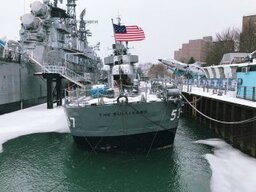Preservation of a National Historic Landmark is always a challenge-- even more so when it is sitting in the water.
Keeping Sully Shipshape: Floating Landmark Presents Unique Preservation Challenges
The full content is available in the Fall 2021 Issue, or online with the purchase of:
- Digital Download: Keeping Sully Shipshape: Floating Landmark Presents Unique Preservation Challenges
If you have already purchased the product above, you can Sign In to access it.
Related Content








